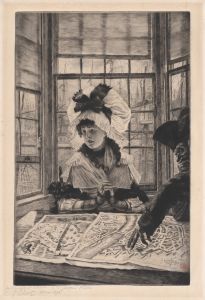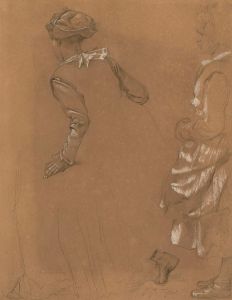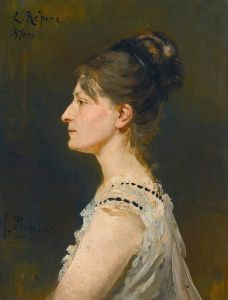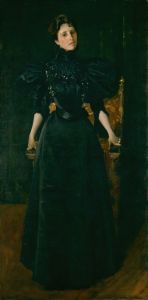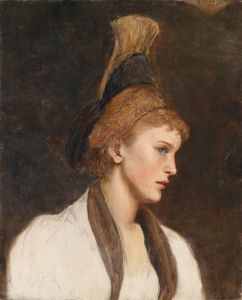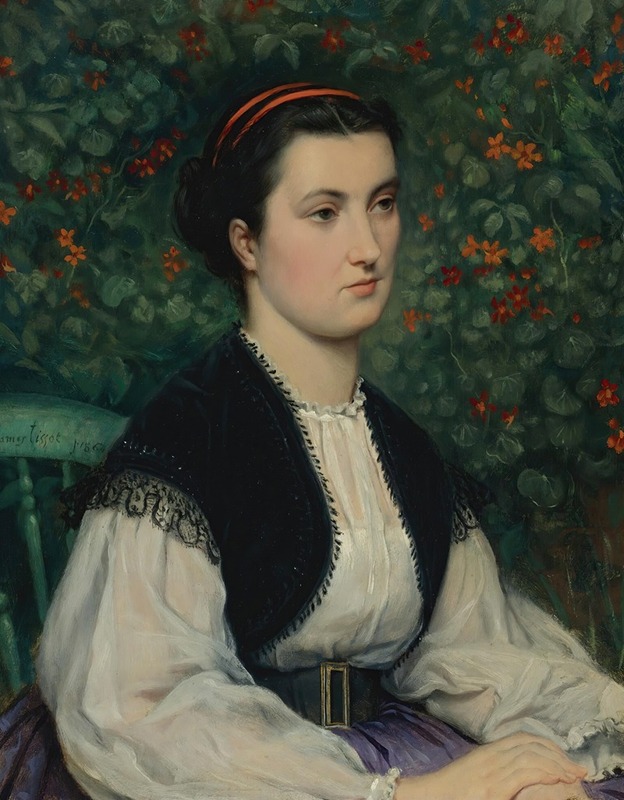
Portrait Of A Lady
A hand-painted replica of James Tissot’s masterpiece Portrait Of A Lady, meticulously crafted by professional artists to capture the true essence of the original. Each piece is created with museum-quality canvas and rare mineral pigments, carefully painted by experienced artists with delicate brushstrokes and rich, layered colors to perfectly recreate the texture of the original artwork. Unlike machine-printed reproductions, this hand-painted version brings the painting to life, infused with the artist’s emotions and skill in every stroke. Whether for personal collection or home decoration, it instantly elevates the artistic atmosphere of any space.
James Tissot's Portrait of a Lady is a painting created by the French artist Jacques Joseph Tissot, commonly known as James Tissot (1836–1902). Tissot was a prominent painter and illustrator of the 19th century, renowned for his detailed and elegant depictions of fashionable society, particularly during the Victorian era. While specific details about Portrait of a Lady are limited, the work is consistent with Tissot's broader artistic style and thematic focus.
Tissot's portraits often captured the sophistication and refinement of his subjects, frequently women of the upper or middle classes. His works are characterized by meticulous attention to detail, particularly in the rendering of fabrics, textures, and accessories, which reflect the fashion and social customs of the time. Tissot's ability to convey the personality and poise of his sitters contributed to his reputation as a skilled portraitist.
Portrait of a Lady exemplifies Tissot's interest in portraying women with grace and individuality. The subject of the painting is depicted in a poised and elegant manner, dressed in attire that reflects the fashion trends of the late 19th century. The composition and use of light in the painting highlight the sitter's features and attire, drawing attention to the intricate details of her clothing and the overall sophistication of the scene.
Tissot's career spanned both France and England, and his works often reflect the cultural influences of both countries. After moving to London in 1871, Tissot became associated with the Aesthetic Movement, which emphasized beauty and artistic refinement. His works from this period often depict scenes of leisure and domestic life, with a focus on the elegance and charm of his subjects.
While Portrait of a Lady is not among Tissot's most famous works, it remains an example of his skill in capturing the essence of his subjects and the aesthetic sensibilities of his time. The painting is part of the broader body of Tissot's work, which continues to be celebrated for its technical mastery and insight into 19th-century society.
Further details about the specific identity of the sitter or the circumstances of the painting's creation are not widely documented. As with many of Tissot's works, the painting reflects his fascination with the interplay between fashion, identity, and social status, themes that resonate throughout his artistic career.










